Sleeper Shark
The Greenland shark is one of the longest living vertebrates in the world.
Advertisement
Sleeper Shark Scientific Classification
Read our Complete Guide to Classification of Animals.
Sleeper Shark Conservation Status
Sleeper Shark Facts
- Prey
- Fish, seals, and mollusks
- Group Behavior
- Solitary
- Fun Fact
- The Greenland shark is one of the longest living vertebrates in the world.
- Estimated Population Size
- Unknown
- Biggest Threat
- Overfishing
- Most Distinctive Feature
- The sharp dagger-like teeth
- Other Name(s)
- Greenland Shark
- Gestation Period
- Varies
- Optimum pH Level
- Varies
- Habitat
- Oceans
- Predators
- Humans, Killer Whales, other sharks
- Diet
- Carnivore
- Type
- Shark
- Common Name
- Sleeper Shark
- Number Of Species
- 20
View all of the Sleeper Shark images!
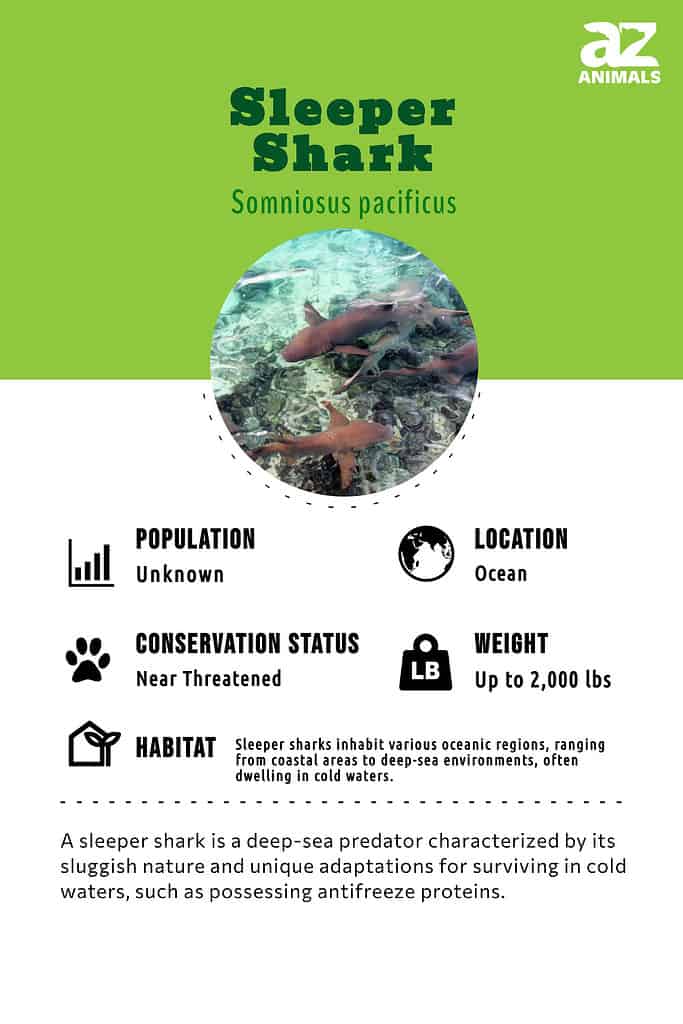
The sleeper shark contains an anti-freeze protein that enables them to survive in cold waters.
The sleeper shark is a family of deep-sea predators found all over the world. The name of this shark comes from their reputation as slow-moving and sluggish animals, but some studies suggest they are in constant motion, traveling a few miles per day along a vertical route in the ocean.
Some smaller, more elongated species from this family are called dogfish. As the name suggests, they have a more traditionally fish-like appearance. Unfortunately, because of their reclusive nature, there is a lot we still don’t understand about their behavior.
3 Incredible Sleeper Shark Facts!
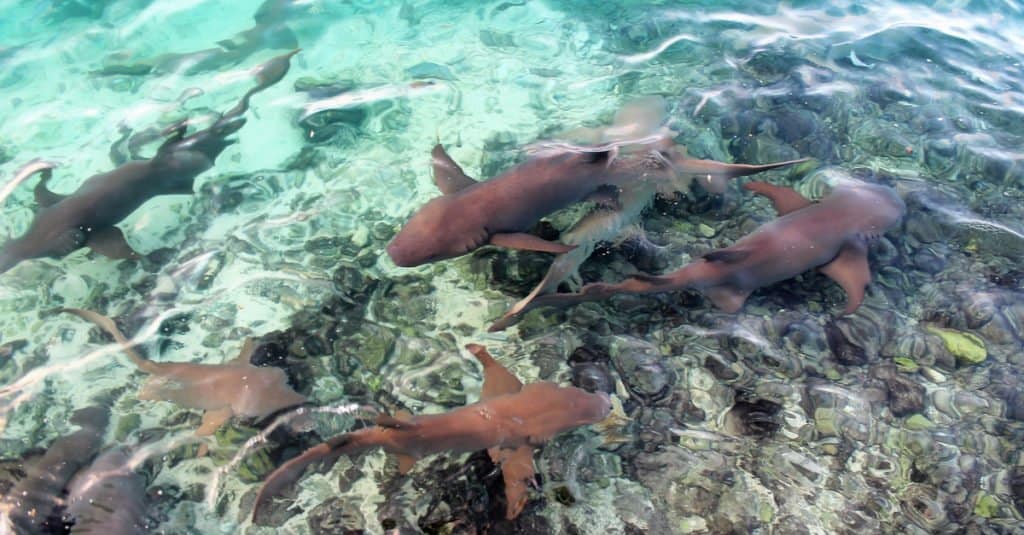
The sleeper shark possesses a special protein that acts as antifreeze, allowing them to endure frigid environments.
©shweta.onlinetester/Shutterstock.com
- The sleeper shark contains an anti-freeze protein that enables them to survive in cold waters.
- Sleeper sharks remain in deep water during the day and move toward the surface at night.
- Some species of sleeper sharks can endure incredible water pressures by diving down to depths of around 12,000 feet.
Classification and Family
The sleeper shark family classification is Somniosidae. This is derived from the Latin word “Somnus” for sleep.
Evolution and Origins
Due to their perceived sluggish behavior, sleeper sharks were historically believed to be sedentary creatures residing near the ocean floor, predominantly feeding on arrow tooth flounder and octopus. Shortened Version: Early fishlike vertebrate fossils are too incomplete to trace the origins of modern fishes precisely.
Ancestral forms likely evolved in streams during the Ordovician Period. Placodermi, a diverse group of armored fishes, emerged during the Silurian and Devonian periods but declined by the end of the Devonian.
Some Placoderms survived until the Early Carboniferous and are thought to have independently led to bony fishes (Osteichthyes) and cartilaginous fishes (Chondrichthyes). Chondrichthyes appeared later than Osteichthyes.
Species
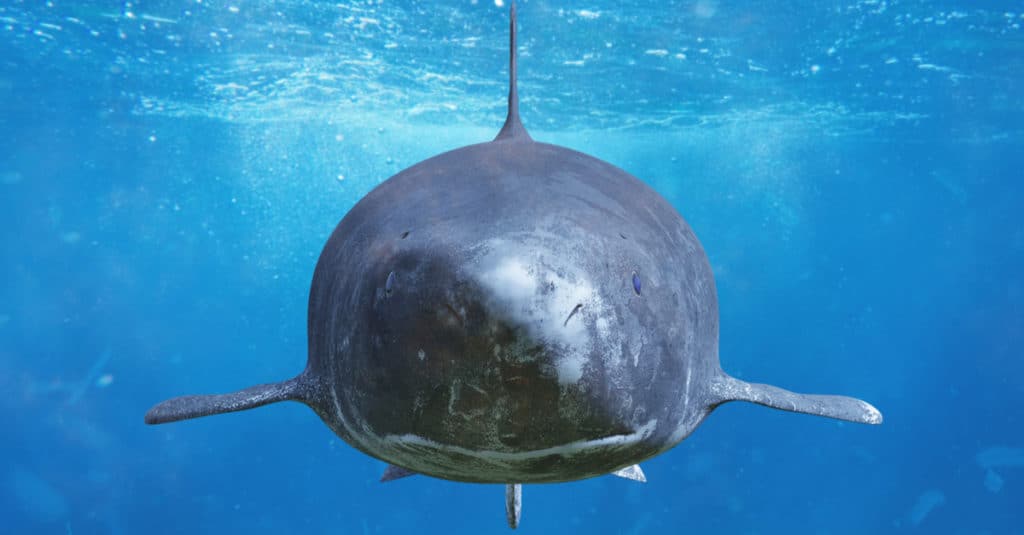
The family of sleeper sharks encompasses approximately 20 officially identified species, distributed among six distinct genera.
©Dotted Yeti/Shutterstock.com
There are around 20 recognized species of sleeper sharks within the family, spread across six different genera. These are the most well-known species:
- Greenland Shark: Found throughout the waters of the North Atlantic and Arctic, the Greenland shark has the longest known lifespan of any species of vertebrates. Based on the rate of growth, it’s thought to live between 250 and 500 years of age. It’s also one of the largest sharks in the world.
- Pacific Sleeper Shark: Native to the North Pacific, including Japan and California, this is another large and relatively well-known species. It is thought to be closely related to the Greenland shark. The sides of the body contain sharp teeth-like structures that give a kind of bristly feel to it.
- Portuguese Dogfish: Despite the name, this species lives all over the globe, from the Atlantic coast of the United States to the southern waters of New Zealand. It has sharp eyesight to detect prey in deep water where sunlight does not penetrate.
List of Different Types
- Pacific sleeper shark
- Greenland shark
- Little sleeper shark
- Portuguese dogfish
- Longnose velvet dogfish
- Knifetooth dogfish
- Japanese velvet dogfish
- Plunket shark
- Largespine velvet dogfish
- Sherwood dogfish
- Smallmouth velvet dogfish
- Shortnose velvet dogfish
Appearance
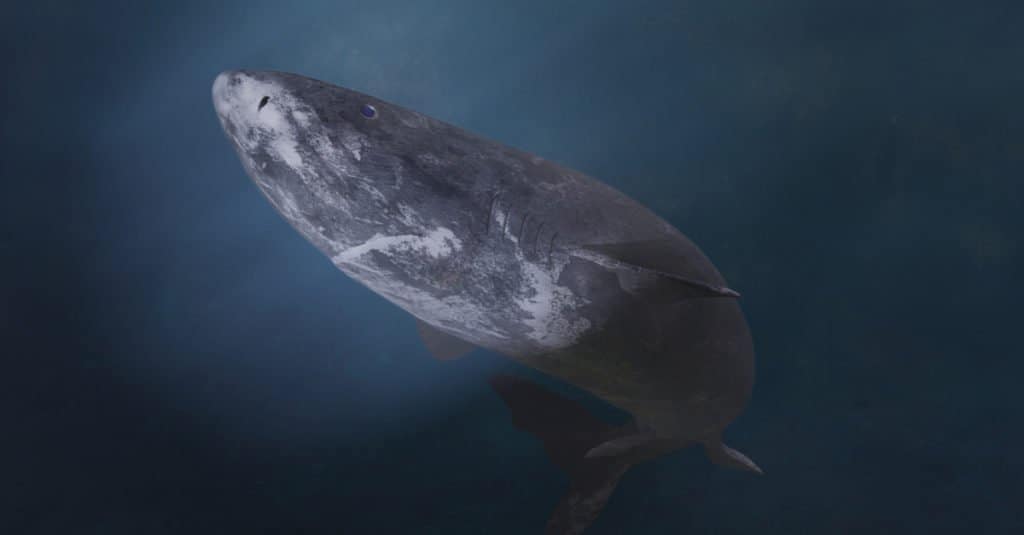
While numerous species of sleeper sharks are relatively small, measuring only a few feet long, both the Pacific sleeper shark and the Greenland shark surpass these dimensions with ease.
©iStock.com/dottedhippo
The sleeper shark varies quite a bit in size and appearance. The typical species is characterized by an elongated body ranging between blue-gray and brown in color, a rounded snout, and two small dorsal fins with or without spines at the base.
Many species are no more than a few feet in length, but the Pacific sleeper shark and the Greenland shark easily exceed this. Measuring up to 20 feet, these two species rank among the largest sharks in the world.
Distribution, Population, and Habitat
Sleeper sharks can be found in deep water seas near continental shelves and slope all around the world, from the extreme north of Greenland to the southern fringes of South Africa. Most species prefer the cold Arctic or temperate waters, but some also live in deep tropical waters.
Because of their elusive nature, many species haven’t yet been evaluated for their conservation status, though numbers may be falling. The vulnerable Greenland shark has been traditionally targeted for its oil and meat in the Atlantic.
Predators and Prey
The sleeper shark is an apex predator in its natural environment. It has many interesting adaptations for feeding. The Pacific (and perhaps other species) has a mouth that functions as a kind of vacuum to suction up prey, while the lower teeth will cut up whatever food it cannot swallow whole.
What eats the sleeper shark?
On account of its size, the sleeper shark does not have many natural predators. It’s thought that the killer whale and some larger sharks may prey upon them.
What does the sleeper shark eat?
The sleeper shark is thought to consume a wide variety of different fish, squid, and other mollusks, and possibly even seals as well. Stomach contents suggest it may also feed upon giant squid. Despite its slow speed, it may be capable of striking quickly at its prey from a close range in a surprise attack.
Reproduction and Lifespan
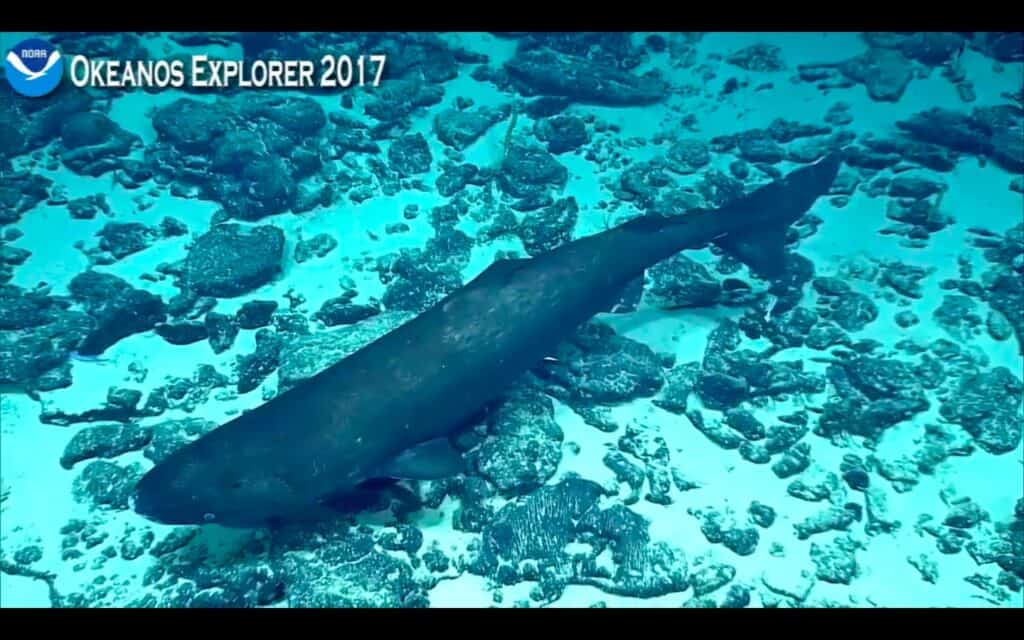
The reproductive behaviors of sleeper sharks continue to elude complete comprehension by scientists.
Scientists still don’t fully understand the reproductive habits of the sleeper shark. It is thought to reproduce by a method called ovoviviparity in which the eggs develop and hatch inside of the womb without the assistance of a placenta.
The length and timing of the breeding season vary by species, but once impregnated, females can carry each baby for more than a year, sometimes producing tens or hundreds of baby sharks at a time.
These are exceptionally slow-maturing and long-lived sharks, many of them living for dozens of years, but the Greenland shark is exceptional even by these standards. Estimates suggest that the baby shark reaches full maturity at 150 years old and lives up to 500 years of age. Their extremely low metabolism and swim speed may account for this extraordinary longevity.
Fishing and Cooking
The sleeper shark is not usually consumed by people, on account of its elusive nature and somewhat inedible flesh. However, the Greenland shark is hunted for food in Iceland and turned into a national dish called Hákarl.
While the shark’s anti-freeze protein is poisonous, people have found a way to ferment and dry the meat to make it safe for consumption. It has a very strong smell and fishy taste that have been known to repel people who consume it for the first time.
View all 293 animals that start with SSleeper Shark FAQs (Frequently Asked Questions)
What is a sleeper shark?
The sleeper shark is a family of slow-moving, deep water predators found all over the world, from the northern pole to the southern Indian and Pacific Oceans.
Are sleeper sharks dangerous?
The sleeper shark has an enormous bite force and sharp teeth, but it has not been known to attack people.
Why is it called a sleeper shark?
The sleeper shark is thought to make rather sluggish movements in the water. The name doesn’t actually have anything to do with sleep.
How big is a sleeper shark?
The largest species, the Greenland shark, can reach a length of around 20 feet. Most species, however, only ever reach a few feet long.
How old do sleeper sharks get?
Most species can live for dozens of years, but the Greenland shark is estimated to have a lifespan of up to 500 years of age.
What zone does the sleeper shark live in?
Sleeper sharks live just beneath the top sunlight layer during the day and come to the surface at night. Of course, this behavior can vary by species. The Portuguese dogfish spends more time in deep water than usual.
Thank you for reading! Have some feedback for us? Contact the AZ Animals editorial team.
Sources
- CBC Kids / Accessed July 14, 2021
- Alaska Department of Fish and Game / Accessed July 14, 2021


















